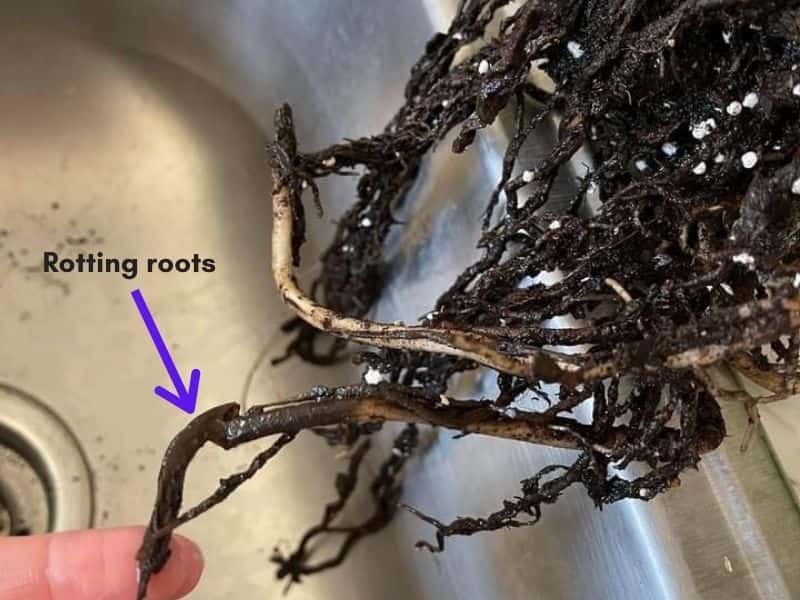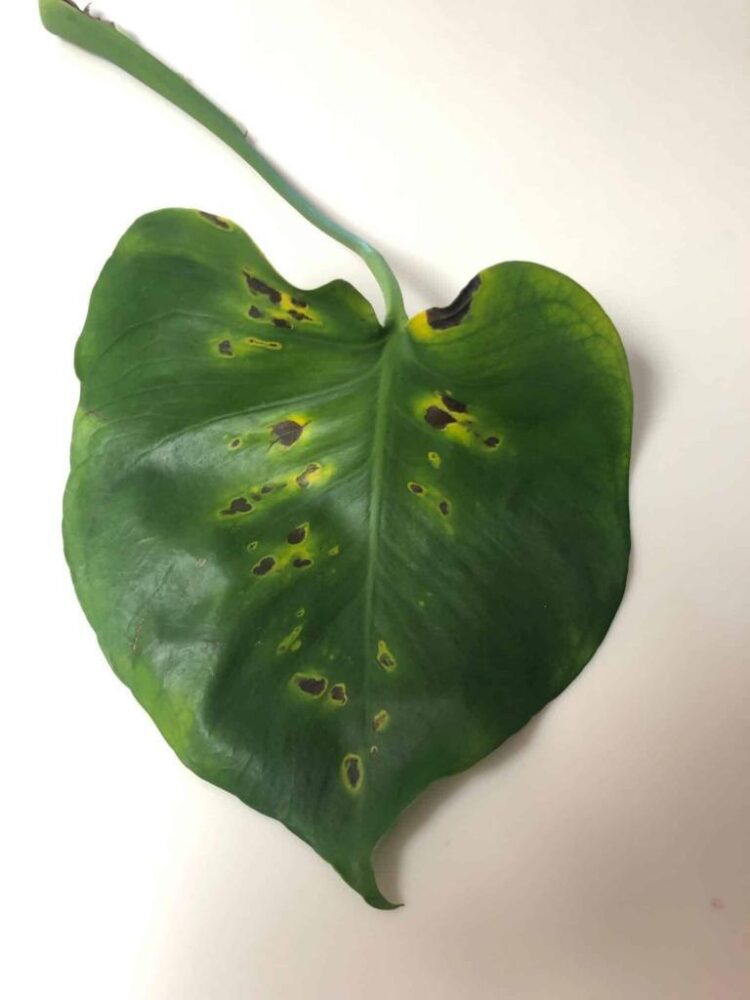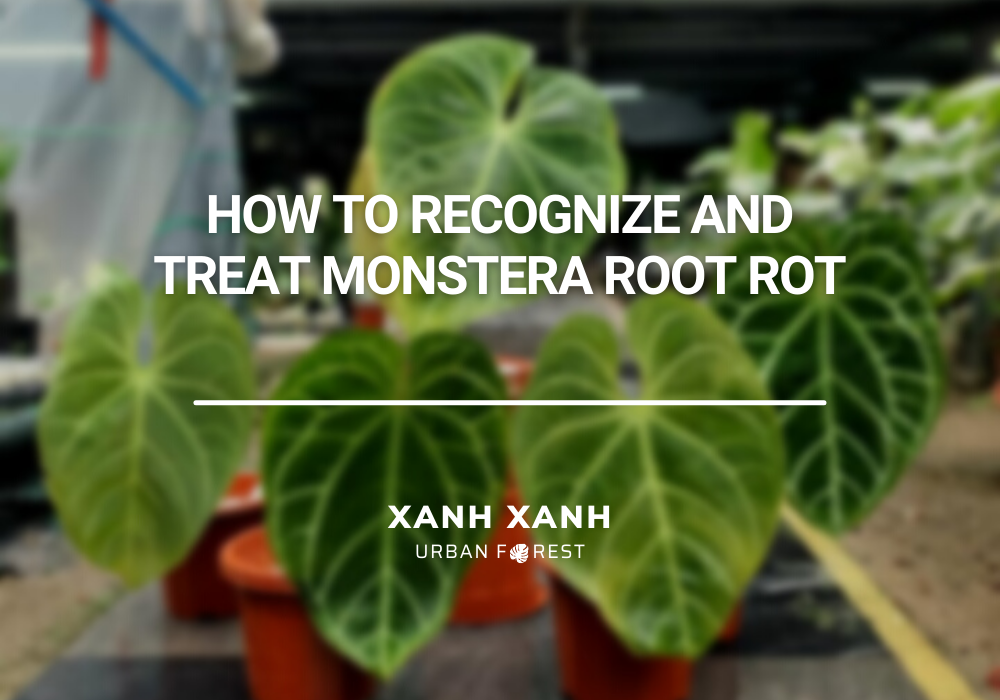Rotten roots! Every owner of a houseplant is terrified when they hear those words.
Over-watering can cause root rot in monsteras, but happily, this disease is manageable if found early and doesn’t have to mean the end for your plant! Everything you need to know about monstera root rot is right here.
What is root rot and how do you prevent it?
First and foremost, let’s define root rot and how to avoid it.
Root rot occurs when your plant‘s roots begin to decay as a result of sitting in water for an extended period of time. Fungus and bacteria thrive in dark, damp environments like wet soil, which can cause your roots to rot.
The best way to avoid this is to keep your monstera from becoming too wet. This implies only watering when the top 2 inches of soil are completely dry to the touch. Then gradually pour water into the soil till it drains out the bottom.
But it’s about more than how much water you give your monstera. Light and drainage are two other factors that can contribute to over-watering.
Ensure that your monstera receives lots of bright, indirect sunlight so that it can effectively use water and the soil can dry out. Consider this: if you wanted to dry a wet shirt, you wouldn’t hang it in a cold, dark room, would you? You’d most likely hang it somewhere warm, dry, and bright. Soil is the same way!
Additionally, ensure that your container has drainage and that your soil drains well. You should see some water pouring out the bottom when you water. If not, you’ll need to look for a pot with additional drainage holes or a better soil. Our own premium potting soil comes highly recommended.
Another thing to consider is that a monstera may require less water as the weather cools, so you may not need to give it as much water in the winter as you would in the summer. Don’t forget that!

How to Diagnose Root Rot in Monsteras
If your monstera has root rot, the first place you’ll see it is in the leaves. You’ll notice dark brown to black spots on the lower leaves because they’re the first to absorb the excess water and any fungus or bacterial that has infected the roots.
You’ll also notice wet soil, and if you remove your monstera from the pot, you’ll probably find mushy, dark, smelly roots. Yuck!
How to Treat Root Rot in Monsteras
“Great. My monstera has root rot. Now what do I do?”
Don’t panic! Monsteras are resilient plants and root rot is very treatable. Here’s what to do:
Repot
The first thing you want to do is get your monstera out of the wet, nasty soil. Carefully remove your monstera from the pot (you might need a friend to help you) and rinse as much of the soil off the roots as you can. If you see any rotting roots, carefully trim those away.
Then repot the plant into fresh soil in a clean pot with good drainage. (You can get a new one or clean the old one.)
Prune the affected leaves
Since root rot is usually a fungal problem, you’ll want to remove the affected leaves so the infection doesn’t spread. This also gets rid of those ugly brown spots.
Luckily, monsteras respond well to pruning!
To prune your monstera, wear gloves to protect your hands and use clean, sharp pruning shears or a sharp knife to remove the leaf at the stem. Then throw the leaves in the trash and take it out immediately so the pathogens don’t spread to your other plants! (And whatever you do, don’t compost the leaves!)
Put it in bright, indirect sunlight
After repotting and pruning, place your monstera back in bright, indirect sunlight so it can adjust and heal. If you think a lack of light might have contributed to the root rot problem, you might want to move it closer to a window or supplement with a grow light like this one so the problem doesn’t happen again!

Use our root rot treatment
Go a little easier on the water for the first few weeks after treating your plant for root rot, but when you do water, make sure to use our root rot treatment to help the roots heal and prevent the rot from returning!
Root rot can also spread from plant to plant thanks to airborne bacteria and fungal spores, so it’s not a bad idea to use this treatment on your other plants as well.
To help protect against bacteria, try our Houseplant Leaf Armor, which also protects against insects and fungus. (As an added bonus, it cleans and adds shine to your monstera’s leaves!)
Catch it early
Your plant stands the best chance of survival if you prevent root rot and catch problems early, so take measures to prevent this condition and watch your monstera closely for signs of infection.
Root rot will be no match for you!
Now that you have come to the end of the topic today. Hope that this article will provide you with useful information. Freely share it to your friends who facing up to similar issues.

